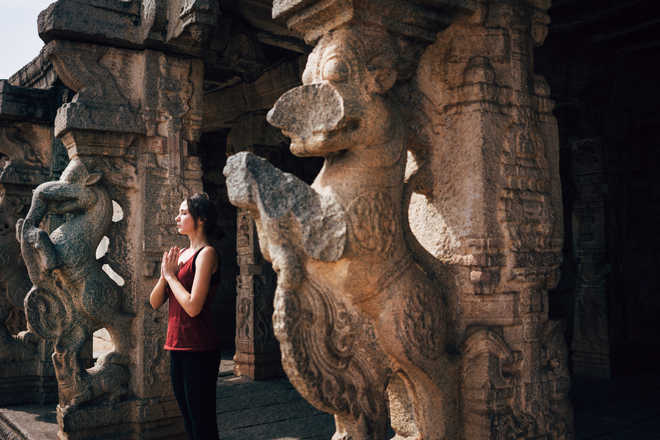
Dr Satish K Kapoor
Mauna sadhana is the celebration of the divine in the solitude of the self. Mauna is the language of infinity, of the eternal void that envelopes all. Silence deepens self understanding by shutting the sensory gates steering it from outside. Thereafter, one speaks without speaking through one’s inner self. The silent Buddha or Mahavira have contributed more in ushering peace in the world than the speaking Socrates or Sophocles.
The first step in mauna sadhana is vak mauna, silence of speech. Human energy is often wasted in useless talk. The tongue sometime does more harm than the bullet. Silence is not escapism but conscious self restraint that saves one from speaking unpleasant truths, from wrangling and unwanted controversies. Yet silence of the ‘sewn-up lips’, whether forced or voluntary due to the exigency of circumstances, cannot be called silence. Even if the human tongue, a movable muscular organ on the floor of the mouth, is chopped off, the clattering of the mind does not stop a bit. In the world of mortals, the intelligent speak when absolutely necessary, measuring every word in the process. Excessive talking dissipates prana, life-force, unbalances the mind, and leaves little scope for the higher self to commune with the instinctive-intellectual self.
The next step is chitta mauna, silence of the mind, having threefold ramifications - buddhi mauna, silence of intellect, ahamkara-mauna, silence of egoity, and iccha-mauna, silence of desire. Mauna is not a state of negation but of awareness as it gives respite from activities detrimental to spiritual growth. This is followed by indriya mauna, silence of the senses, which is possible if one can withdraw each sense from its distracting objects. Finally, silence is stabilised within by observing the flow of thoughts, when they arise, swell, dilute or subside naturally, in an unending process, and then taking a quantum jump into the pure void of higher consciousness. Meditation helps one to be inwardly silent in all the three states of consciousness- jagrata, wakefulness, svapna, dream and sushupti, deep sleep.
The fruit of silence is wisdom received through intuitive flashes. Whispers from the divine are heard when the mind is quiet and composed. In course of time, silence penetrates every pore of the body, and reflects in one’s demeanor and deeds. Silence, with its purifying power, helps to check human vices like krodha, anger, moha, infatuation and kama, passion, making way for spiritual progress.
Mauna sadhana should be a daily habit for achieving inner harmony. It should be undertaken for at least 20-30 minutes or more, in early morning, before going to bed at night, or in between. Simultaneously, one should fill the mind with holy thoughts and meditate on the supreme self. During vacations or at weekend, mauna can be practiced for a whole day or a few hours, depending on one’s capacity, so that the ‘energy of speech’ is transmuted into spiritual energy. The purpose of observing Mauni Amavasya, occurring every month on the last day of the dark fortnight, is to do self introspection by remaining silent.
While practicing mauna, one should not eat or drink, brood over the past or the future, communicate by gestures or by writing, watch television, use electronic gadgets, or do some such thing which distracts attention. One may observe complete silence or restrain speech while taking a morning or evening walk, waiting for bus or train during travel, or while performing the chores of life. Instead of always looking for company, one should occasionally stay alone, and feel the ecstasy of inner silence.
Those who undertake mauna vrata - the vow of silence - for months or years, as in case of mauni babas, should strictly follow the advice of their gurus in this respect. Although it is not possible for an ordinary person to observe kashtha mauna - remaining silent like a log of wood - one can at least train one’s mind in samyaka vak – right Speech, as in Ashta Marga, the eight-fold path advocated by Gautama the Buddha.
(Dr Satish K Kapoor, former British Council Scholar, is a noted author, historian and spiritualist based in Jalandhar city)


























